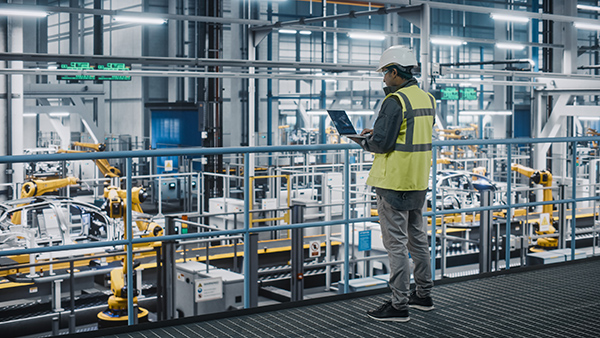Nordic nations rank high for quality of life, yet new research shows workplace safety may be their most overlooked risk.

Denmark, Finland, Norway and Sweden are global leaders when it comes to quality of life, sustainability and overall well-being. These countries routinely top global rankings: Finland, Denmark and Iceland ranked first, second and third respectively in the 2024 World Happiness Report. Naturally, one might assume that workplace safety is equally prioritized.
Yet a recent study from EcoOnline, which surveyed over 3,600 workers across the Nordics, paints a more complicated picture. While 80% of respondents reported feeling safe at work, nearly half said they had experienced or witnessed a workplace accident or illness. This discrepancy between perceived and actual safety highlights persistent blind spots, even in regions with high safety reputations.
As someone who’s led organizations through high-growth, high-risk environments, I’ve learned that perception alone can be dangerously misleading. The data reveals that feeling safe isn’t the same as being safe.
One of the most concerning findings from the survey was the inconsistency in safety training, especially when it comes to handling chemical hazards. In Norway, 79% of employees reported receiving chemical safety training. In Denmark, that figure dropped to just 60%.
This gap is especially troubling given that chemical exposure is one of the leading occupational risks worldwide. According to the European Agency for Safety and Health at Work (EU-OSHA), hazardous substances significantly contribute to illnesses such as cancer, respiratory conditions and skin diseases.
In any region, but particularly in advanced economies, this kind of variation is unacceptable. We must move from reactive to proactive safety strategies—and that starts with personalized training and learning that’s embedded in the flow of work.
No matter how advanced a country’s safety infrastructure may be, if training isn’t consistent and standardized, workers may lack the critical knowledge needed to handle dangerous materials safely.
Despite the Nordic region’s reputation for early tech adoption, the study reveals surprisingly low uptake of digital safety tools in workplaces. Only 61% of employees surveyed have access to digital chemical management systems. The concern is more acute in Finland, where just 53% reported having access, suggesting that many companies still rely on outdated or manual tracking methods.
What’s more, employees themselves are signaling a shift. Nearly half (47%) said they prefer using digital reporting systems over manual ones, and in Sweden, mobile reporting preferences jumped from 17% to 24% in just two years. This trend signals growing expectations for real-time, user-friendly safety solutions that fit seamlessly into daily workflows. Companies that fall behind risk not just safety performance – but employee satisfaction, too.
This gap in adoption reflects broader global trends. In sectors like construction, AI-powered tools are being developed to flag hazards such as improperly worn personal protective equipment (PPE) or unsafe worker behavior. However, widespread deployment remains limited due to barriers such as cost, privacy concerns and the lack of standardized data (Business Insider, 2025). These barriers mirror what we’re seeing in Nordic workplaces: a recognition of technology’s promise, but a delay in realizing its potential.
It’s not a tech problem – it’s a leadership challenge. Organizations must prioritize digitization to gain operational visibility and predictability—going beyond compliance to drive accountability, accelerate hazard identification, and ultimately protect lives.
And delays come at a cost, not just to safety, but to satisfaction. Data from EcoOnline shows that employees who receive proper safety training and have access to modern EHS tools report higher job satisfaction, take fewer sick days, and have better communication with supervisors.
Safety is more than a checklist, it’s a reflection of culture. Organizations that prioritize it see returns in morale, retention and performance. Safety is a strategic advantage when done right. When it’s neglected, it becomes a silent risk that shows up in turnover, disengagement and long-term costs.
Despite strong regulatory frameworks, countries like the U.S. and Canada continue to grapple with serious safety challenges. In the U.S. alone, the Bureau of Labor Statistics reported 5,283 fatal workplace injuries in 2023, a slight improvement from 2022 but still a stark reminder of the ongoing risks. While nonfatal injuries declined in 2023, more than 2.6 million workplace injuries and illnesses were still recorded in private industry.
The Nordic data offers a powerful reminder: even in regions known for getting it right, safety isn’t a guarantee. True protection depends on more than rules, it depends on execution, culture and continuous oversight.
No one is immune. If world-leading nations face gaps, we all need to ask tougher questions about our blind spots—and act decisively on the answers.
The EcoOnline findings offer several takeaways for North American employers:
Safety culture isn’t a program – it’s a mindset. And like all mindsets, it’s shaped by the tone at the top. Leadership must model the urgency and transparency they want to see echoed on the front lines.
The link between safety and retention can’t be ignored. In fact, 85% of Nordic workers say the work environment is a factor in their job decisions, and 83% said they would consider leaving a role due to poor safety conditions.
That makes safety not just a moral or operational imperative, but a competitive advantage in the battle for talent.
If even the Nordics are struggling with safety, no one can afford complacency. The best workplaces won’t wait for an incident—they’ll treat safety with the same seriousness as corporate strategy, using data, tech and empathy to lead. Because our people aren’t just an asset—they’re our responsibility.

About the Author:
Tom Goodmanson, CEO of EcoOnline, brings over 25 years of expertise in spearheading the growth of dynamic software and technology firms. Returning from retirement in 2023, Tom was compelled by the opportunity to revolutionize how organizations safeguard both individuals and the environment for future generations. Under his leadership, EcoOnline has undergone a transformative journey, prioritising scalable and sustainable growth while nurturing a culture of empowerment for its employees and clients alike. Recognizing the market demand for a comprehensive EHS and ESG solution, Tom’s vision of a user-friendly, fully integrated platform positions EcoOnline as the premier choice for global organizations striving higher impact.
In this episode, I sat down with Beejan Giga, Director | Partner and Caleb Emerson, Senior Results Manager at Carpedia International. We discussed the insights behind their recent Industry Today article, “Thinking Three Moves Ahead” and together we explored how manufacturers can plan more strategically, align with their suppliers, and build the operational discipline needed to support intentional, sustainable growth. It was a conversation packed with practical perspectives on navigating a fast-changing industry landscape.